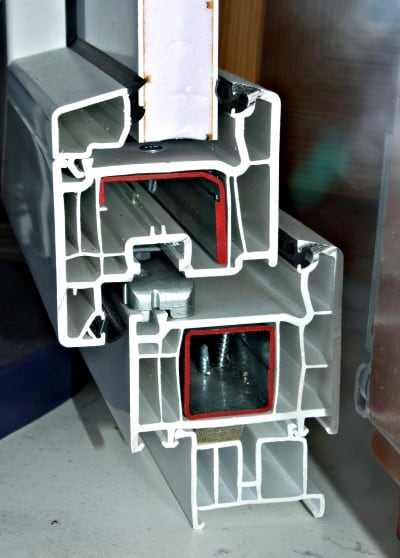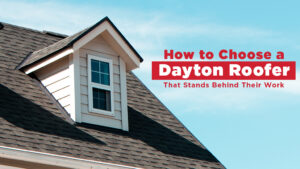
At Mr. Roof, we pride ourselves in being experts in all exterior parts of your home and business. Our residential and commercial divisions not only handle roofs, we can take on any size of project, whether windows, gutters, siding, or masonry.
When it comes to your windows, there are a lot of terms that can get confusing, so we’ve built a beginner windows glossary. Each term will have two sections:
- What the term actually is.
- Why you should care as a home/business owner.
Airspace
- In double and triple pane windows, this is the air that exists between the panes. This can be air, or it can be filled with argon or krypton that displaces the air. Effectively, this is a gas insulation layer between your home and the elements.
- Retaining heat in the winter and cold in the summer is crucial in window construction. The contents of your airspace directly influence how much heat is retained; argon has a great retention rate, krypton has the best retention rate.
Argon
- Argon is a window gas that can be pumped into double and triple pane glass.
- Argon gas is denser than air (about 25%) and is a very cost effective solution for increasing your window energy efficiency.
Drip cap
- The drip cap is an angled piece of material that is placed where the window meets the siding.
- Why You Should Care: A properly installed drip cap diverts water away from your windows, prolonging the life of your investment.
Frame
- The window frame is the material that holds your glass, sash(es), and hinges together.
- Rotting window frames are a common reason to replace your windows. The material you choose for your window frame can affect the aesthetic appeal, energy efficiency, and life of your windows.
Glass
- The glass of your window might be the most important component. Your glass provides aesthetic appeal and protection from the outside world. The glass can have a pattern, sometimes called a grid, as well as different types of fills and coatings.
- Whichever glass you choose will breathe personality into your windows. With available options such as ungridded, colonial, traditional, diamond, or victorian, your glass patterns can modernize your home or add a touch of class.
Krypton
- Krypton is another window gas that can be pumped into double and triple pane windows. Krypton is smaller than argon, but still more dense than air.
- If you want maximum energy efficiency, krypton is your gas. Krypton can displace air molecules more effectively than argon, simply because of its smaller size. Krypton also works effectively with very narrow glass selections, as the molecules are smaller. The benefits of krypton are usually well worth the cost.
Low-E
- Low-E is a classification of coating that goes on your glass to minimize ultraviolet and infrared light. These coatings let you see through the glass perfectly, and let in all visible light.
- Low-E coatings maximize the energy efficiency of your windows without compromising aesthetic appeal. Low-E coatings are not visible, they simply reduce the temperature change without affecting the light.
Pane
- The pane of a window is a sheet of glass that separates you from the elements. Most replacement windows come with options for single, double, or triple paned.
- The number of sheets of glass between you and the outside world has a direct effect on how much heat or cold makes it into your home. If you’re looking for energy savings, triple panes are the way to go.
R-value
- The R-value of a window is a metric that registers the ability of your windows to resist heat loss, based on number of panes, coatings, and gas filling. R-value is the opposite of U-value. A high R-value is good.
- Depending on where you live, your windows may have to have different R-values to be considered energy efficient. If you want your home to maximize its energy efficiency, you should definitely want a high R-value!
Rough opening
- The rough opening is the opening in the envelope of your home where the windows go. We use the word rough because it isn’t pretty until we pop in your new windows!
- During your new window installation process, your rough openings may be exposed for a short period of time. This is nothing to fret about; we work as quickly as possible to ensure accurate and timely installation of your windows.
Sash
- The sash is the part of your window that surrounds the actual glass. This is usually a framed part of the window that has grooves for movement in double-hung windows (windows that move up and down).
- With most low-quality windows, sashes are among the first parts to break.
Screen
- The screen is a mesh or wire barrier that allows you to keep your windows open without bugs entering your home.
- We find that a lot of homeowners do not like screens, so we only sell windows with very high visual appeal. You won’t notice our screens.
Sill
- The window sill holds the sides of your window frame in place. Most window sills are made of wood, fiberglass, or metal.
- For the interior of your home, the sill can be an extrusion, like a shelf, or completely trimmed and tucked away.
Spacer
- The spacer in your windows provides an precise distance between the layers of glass in your windows. Spacers can be made out of hard material, such as metal, or soft materials, like foam.
- The spacer ensures that your window has the correct fill of gas, provides protection from the elements, and adjusts to changes in temperature. Changes in temperature can cause expansion and contraction, and your window spacer makes sure you window adjusts with the changes in the weather.
U-value
- The U-value is a metric of registered heat loss for your windows, based on number of panes, coatings, and gas filling. U-value is the opposite of R-value. A low U-value is good.
- The lower the U-Value, the more energy efficient your windows will be. If you want your home to maximize its energy efficiency, you should definitely want a low U-Value!
Weather Stripping
- What It Is: Weather stripping is a physical barrier that is used to seal in your windows.
- Why You Should Care: Properly installed weather stripping can save you 5-20% on your heating bills. We ensure that your weather stripping is solidly installed and is built to last.








